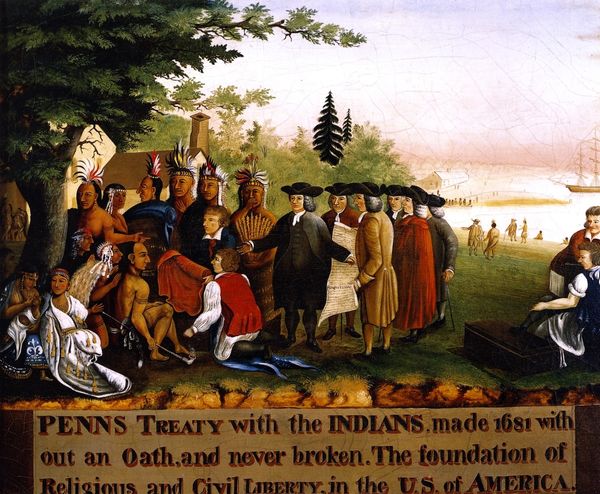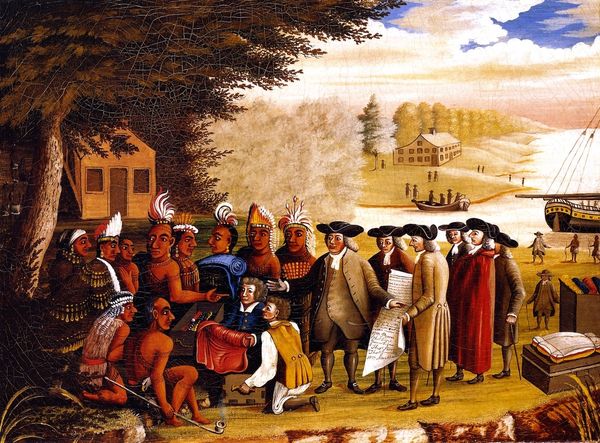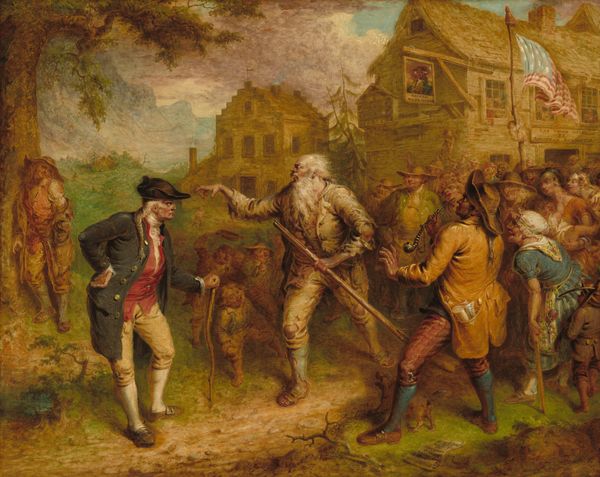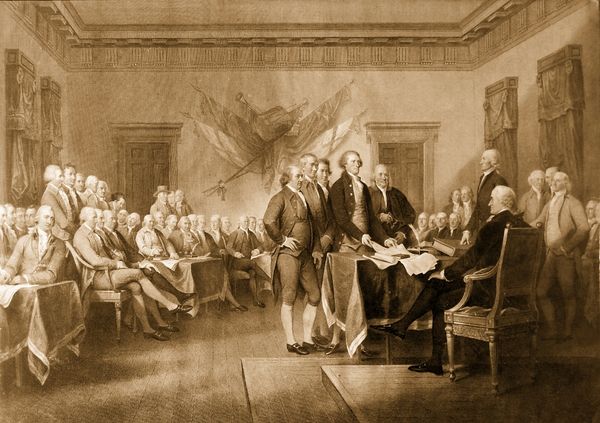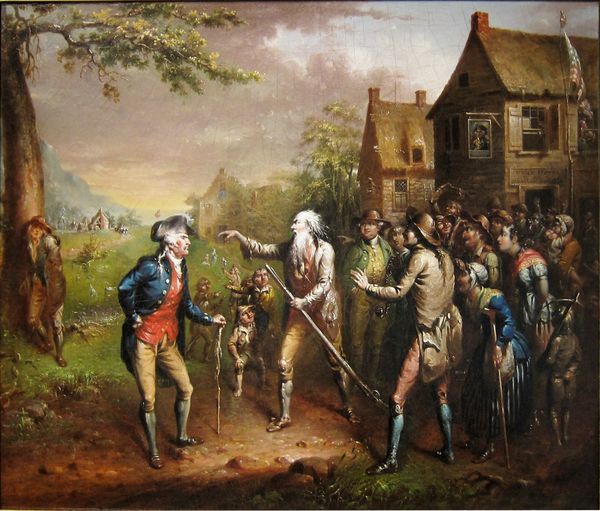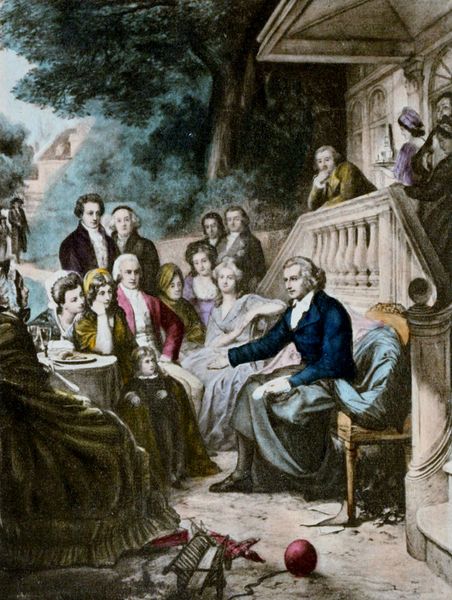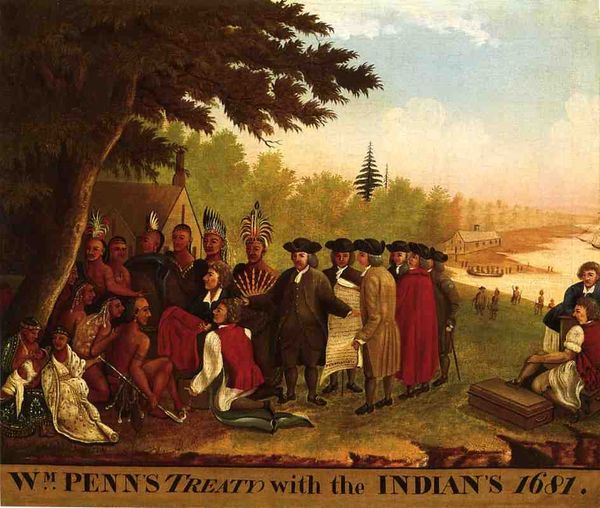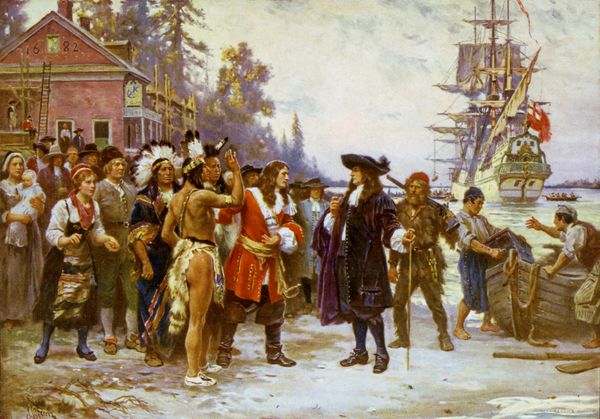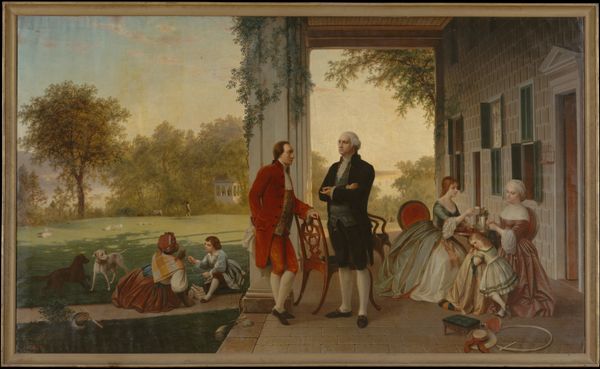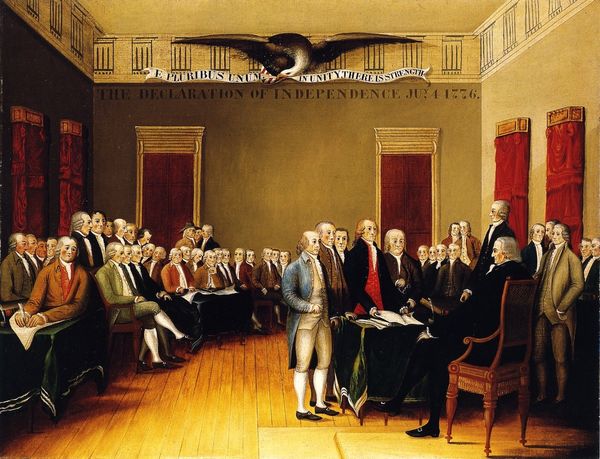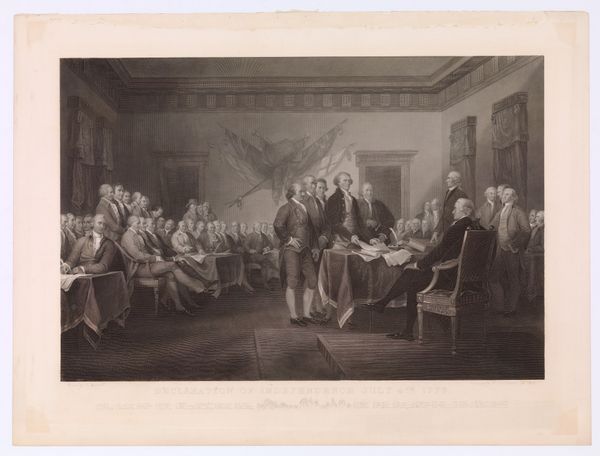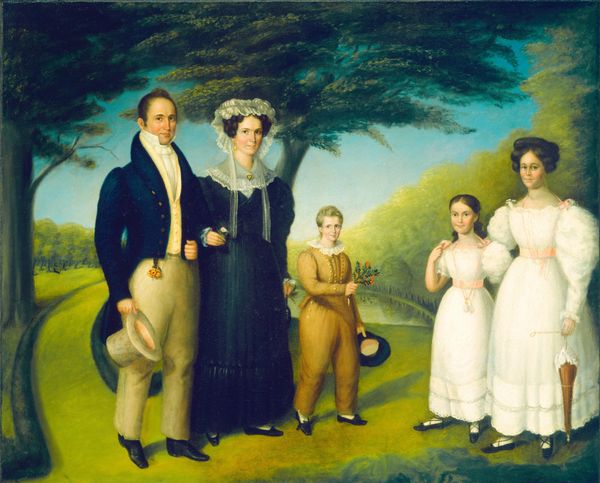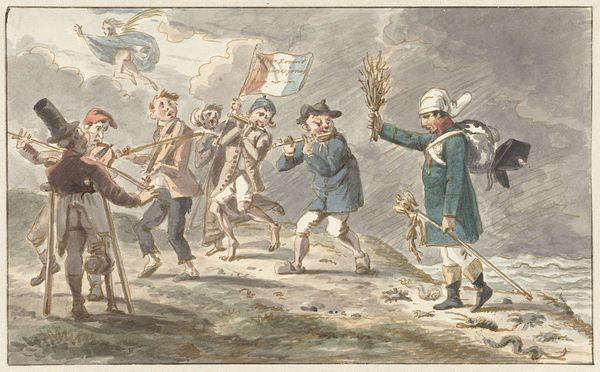
painting, oil-paint
#
painting
#
oil-paint
#
landscape
#
oil painting
#
group-portraits
#
romanticism
#
history-painting
Dimensions: overall: 61.7 x 76.5 cm (24 5/16 x 30 1/8 in.) framed: 67.6 x 82.9 x 5.1 cm (26 5/8 x 32 5/8 x 2 in.)
Copyright: National Gallery of Art: CC0 1.0
Curator: Ah, here we have Edward Hicks's "Penn's Treaty with the Indians," painted between 1840 and 1844. The oil on canvas depicts William Penn's legendary treaty signing with the Lenape in 1681. Editor: My initial reaction is one of discomfort. There's this pervasive sense of idealized harmony that feels… divorced from historical reality, shall we say. Curator: Exactly! The composition deliberately evokes a sense of utopian peace. The Quaker hat, a symbol of piety and simplicity, is strategically repeated on the figures accompanying Penn. Hicks used his painting as a means of reflecting on his own Quaker values. Editor: But doesn't this rosy depiction completely erase the violence and displacement that followed colonization? It seems to conveniently gloss over the power dynamics inherent in this encounter. Look at how passively the Lenape are portrayed, almost as if welcoming their own dispossession. Curator: Indeed. The imagery is rich with symbolism intended to communicate specific moral messages, though it reads quite differently today. The elm tree under which the treaty was supposedly signed acts almost like a protective canopy, a silent witness to this supposedly equitable exchange. In that era, history was sometimes reimagined to inspire certain virtues. Editor: Yet the “never broken” sentiment plastered on the inscription clashes with any informed understanding of history. This claim only reinforces a damaging myth, perpetuating a sanitized narrative that does violence to the experiences of indigenous peoples. I just don't think this is about pure history. This speaks to cultural anxieties of the era, about justification. Curator: Perhaps. The child motif and pairing of individuals mirrors other of Hicks’ iconic series, the “Peaceable Kingdom” reflecting innocence. It could have also been his interpretation on societal changes in an industrializing and urbanizing America in contrast to peaceful existence and mutual understanding. It’s thought-provoking for what it conceals. Editor: Ultimately, "Penn's Treaty" serves as a reminder of how narratives are constructed and manipulated. The peaceable kingdom projected forward denies agency and attempts to make something tragic seem harmonious. I cannot help but approach any romantic image that ignores context with extreme wariness. Curator: I suppose reflecting on that contrast between the image and the complex truth makes viewing such art from earlier times important, so we continue to reflect. It remains quite compelling.
Comments
No comments
Be the first to comment and join the conversation on the ultimate creative platform.
